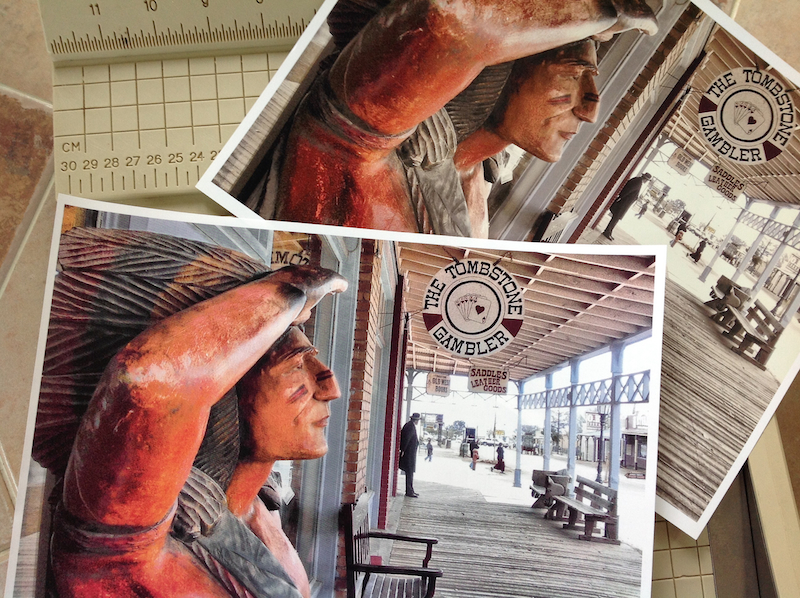HOME
TOPICS
ABOUT ME
Thicker things come to him who waits.
Starting our fourth decade: Al Fasoldt's reviews and commentaries, continuously online since 1983

Which of these prints was made by the Brother laser printer? You might be surprised.
Laser photo prints indistinguishable from inkjet prints
March 8, 2015
By Al Fasoldt
Copyright © 2015, Al Fasoldt
Copyright © 2015, The Post-Standard
Last week I described the Brother HL-3170CDW color laser printer. The new printer is both cheap -- only $179 from Amazon -- and really good. (Catch up with that column at www.technofileonline.com/texts/tec030115.html.)
In normal printing jobs, the kind laser printers are known for, the new Brother is stellar. It's fast and quiet, and easily handles duplex (double-sided) printing. It has a large-capacity paper tray along with a manual feed slot for envelopes or thicker-than-normal paper.
But those features aren't what impressed me. Knowing the abysmal reputation color laser printers generally have for printing photos, I armed myself with a pack of laser photo paper and opened up my Mac's Lightroom photo files. I chose a collection of test photos -- pictures that tax even the best printing systems.
I was surprised and a little disappointed. But with the help of my brother Bob, a print-quality nut like me, I learned how to stop thinking like an inkjet owner and start looking at photo printing a whole new way. It was worth the trouble.
Bob's got the same printer, so it was easy for us to try different techniques without dashing up and down the East Coast. What we learned should be a big help to anyone who wants to make the most of printing photos with a color laser printer.
(Two notes first. The Brother technically isn't a laser printer but a "laser class" printer. It uses an array of LEDs to do the work of the laser beam of outmoded designs. But I'll still call it a laser printer. And, secondly, in all our testing, Bob and I were careful to use laser glossy photo paper, not inkjet glossy or semigloss photo paper. Do NOT EVER use inkjet glossy or semigloss photo paper in a laser printer; it will melt into the innards of your printer. Inkjet plain paper and matte paper is OK, but not inkjet glossy or semigloss photo paper.)
Surprisingly, we were able to print photos as good as any printed on consumer-level inkjet printers. I have a large-format pro-level Canon inkjet that will do better, but, hey, one set of ink cartridges for that printer costs more than the Brother laser itself. Prints weren't perfect, however; sometimes, large areas of solid color, such as the sky, tended to look streaked. We're looking for a solution and will keep you informed.
My disappointment came when I began to use the photo paper I'd bought at Staples. It was much thinner than any inkjet photo paper I'd ever seen. Any thinner and it could have been mistaken for Kleenex. I found that weird, especially since the Brother laser, like nearly all others, can handle thicker paper easily. I used it for two days and apologized every time I showed someone a sample print.
But thicker things come to him who waits. Bob located normal-weight laser photo paper -- also at Staples, but only if you ordered online for in-store delivery -- and we settled on that. It's "HP Glossy Brochure Paper 200g," made specifically for laser printers. Because the HP paper matches typical inkjet photo paper in weight and feel, photos printed on it can't be distinguished from inkjet photo prints when someone's handling them or passing them around. (We did find a quick and foolproof way of telling them apart, however: We could dunk the laser prints in water with no effect, but the inkjet prints were ruined.)
As I do with all my pro inkjet gallery prints -- curators like to call them "giclee" prints to hide their inkjet origins! -- I used a technique on some of my laser prints that brings out the raw color fused into the paper. I printed on medium-thickness photo matte paper instead of glossy photo paper, then mounted the photos behind glass using a simple, pre-built frame.
Photos presented that way look stunning, gaining a hard-surface look from the glass while revealing the lushness that can only come from color laid down on a soft matte surface. Once you see such results and hang them on your walls, you'll have a great time asking your friends to guess which expensive inkjet did the printing. I used Epson Enhanced Matte, an archival paper.
I've seen no reliable tests that can estimate the colorfastness of prints from a laser printer. Good inkjet printers like my Canon generally are rated for 100-year print life when archival paper is used. I'll let you know what I find out.
One last tip: On Windows, advanced printer settings are hidden in three or four places; keep clicking different things and be sure to read the manual on the CD. The Mac version is easier to deal with but lacks some of the extras. Both produced equally spectacular results.
(Photo puzzler: The shot on the left was printed on the laser printer. Was that your guess?)